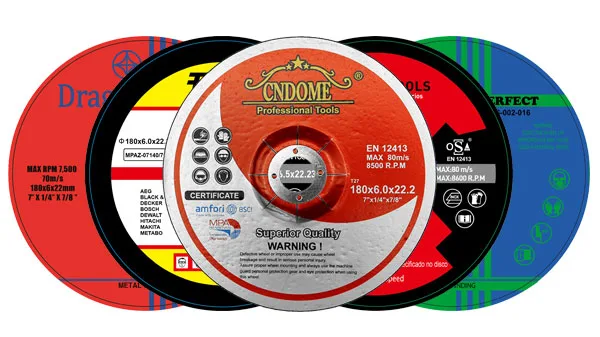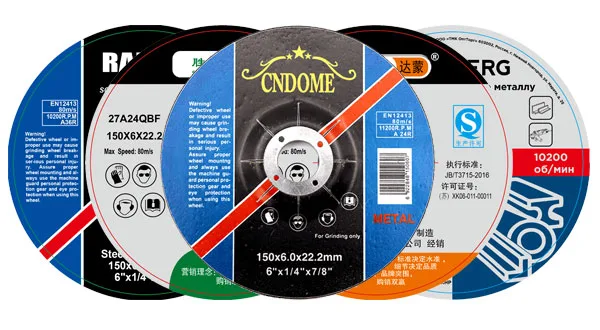In the world of metalworking, precision is not just a preference; it’s a necessity. Achieving the perfect cut or surface finish depends on a variety of factors, one of which is the grit size of your grinding wheels. Grit size plays a critical role in determining the quality and efficiency of your grinding operations. In this blog, we’ll explore what grit size is and why it matters in the world of grinding.
Defining Grit Size: The Basics
In the context of grinding wheels, “grit size” refers to the size of the abrasive particles that make up the wheel. These abrasive particles are typically bonded together with a matrix to form the grinding surface. Grit size is measured using a scale developed by the American National Standards Institute (ANSI) known as the CAMI (Coated Abrasives Manufacturers Institute) or FEPA (Federation of European Producers of Abrasives) scale. This scale assigns a specific number to each grit size, which corresponds to the size of the abrasive particles.
The grit size is typically represented as a number followed by the letter “mesh” (e.g., 60 mesh, 120 mesh, etc.). In this context, a higher number indicates a finer grit size, whereas a lower number signifies a coarser grit size. For example, a 60-grit wheel contains larger abrasive particles than a 120-grit wheel.
Grit Size and Material Removal
The grit size of a grinding wheel has a direct impact on the material removal rate and the quality of the finished workpiece. Here’s how it affects the grinding process:
Material Removal Rate: Coarse grit wheels (with lower grit numbers) have larger abrasive particles, which means they remove more material quickly. These wheels are excellent for tasks like rough grinding and shaping.
Surface Finish: Fine grit wheels (with higher grit numbers) have smaller abrasive particles that produce smoother and more precise finishes. They are ideal for tasks that require a high degree of precision, like tool sharpening and creating polished surfaces.
Selecting the Right Grit Size
Choosing the appropriate grit size for your grinding task is crucial. The general rule of thumb is:
Coarse Grit (Lower Number): Use these wheels for rapid material removal, such as rough grinding or shaping.
Fine Grit (Higher Number): Opt for finer grit wheels when you need precise, smooth finishes, like tool sharpening and creating polished surfaces.
The specific grit size you choose also depends on the material you’re working with. Softer materials may require coarser grits, while harder materials benefit from finer grits. It’s essential to match the grit size to the task and material to achieve the best results.
In Conclusion
Grit size is a fundamental aspect of grinding wheels that significantly influences the efficiency and quality of your grinding operations. Understanding the relationship between grit size, material removal rate, and surface finish is essential for selecting the right grinding wheel for your specific needs. Whether you’re shaping, sharpening, or polishing, the appropriate grit size is your key to achieving the level of precision and efficiency you desire in your metalworking projects.
Online Message
Minimum Order Quantity: 5,000 Pcs, 10 Pcs Free Samples.
Contact Us For More Information!
Tel/WhatsApp
+86 18796960868
DomeGrinding@hotmail.com
Address



